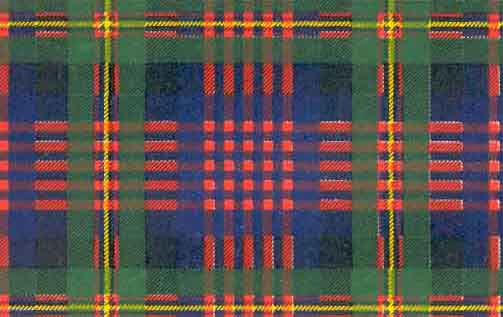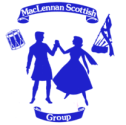Costumes
Would you like MacLennan Scottish Group to perform for you?
The men wear the traditional kilt, derived originally from the belted plaid, a piece of tartan some two metres wide and four to six metres in length, pleated in the middle to fit the size of the wearer, with sufficient to cover the back and front of the body. This was bound round the body with a leather belt. The modern kilt is a reduced version of the belted plaid, consisting of a length of material pleated and sown both to fit the size of the wearer and reveal the tartan pattern. The men wear either evening or day jackets, depending on the formality of the occasion. The costume in its current form is largely a nineteenth century invention.The ladies wear either a plain long white dress, with a tartan sash, reflecting the ballroom origins of the costume, or, alternatively, the Aboyne costume: a tartan skirt and plaid, with a white blouse and a waistcoat. Again, the Aboyne is a relatively modern development. The traditional garb would no doubt have been a simple skirt and blouse with a shawl, and the MacLennan Scottish Group does perform some dances in a version of this costume.
Tartan
The traditional feature of Scottish costume is, of course, the tartan. The origin of tartan dates back many hundreds of years, when characteristic patterns of simple checks of two or three colours (obtained, of course, from natural dyes – plants, roots, berries and trees), worn by people in a particular district. Such people were usually members of the same clan, so that the district tartan was, by default, often a clan tartan, but the identification of particular patterns with particular families probably did not evolve until the eighteenth century, although as early as the second half of the sixteenth century the obligation upon weavers to produce material according to particular combinations of threads in different colours had been established. When chemical dyes were introduced, a much wider variety of colours and patterns became possible.After the Battle of Culloden in 1746, the wearing of
tartan in the Highlands became a penal offence, and it was not until
1822 that the first great tartan revival took place, when George IV,
visiting Edinburgh, suggested that those attending functions should
wear their traditional tartans. After more than seventy
years, of course, the knowledge of many traditional patterns had been
lost, and a wide variety of new patterns was, in consequence, developed
at that time. Subsequently, over the years, a degree of regulation of
tartan has taken place.
Many clans have a number of tartans, often similar, for different
branches of the clan, or for different functions. Dress tartans, for
example, often contain lighter coloured patterns, for evening wear.
Hunting tartans, predominantly green and brown, were developed for
sport or outdoor activities, particularly by clans with brightly
coloured tartans. Nowadays tartans may be produced in a variety of
shades, such as muted or ancient colours, which tend to use less bright
dyes.
The pattern of the MacLennan tartan is shown below.

Click here to go to the top of the page.
